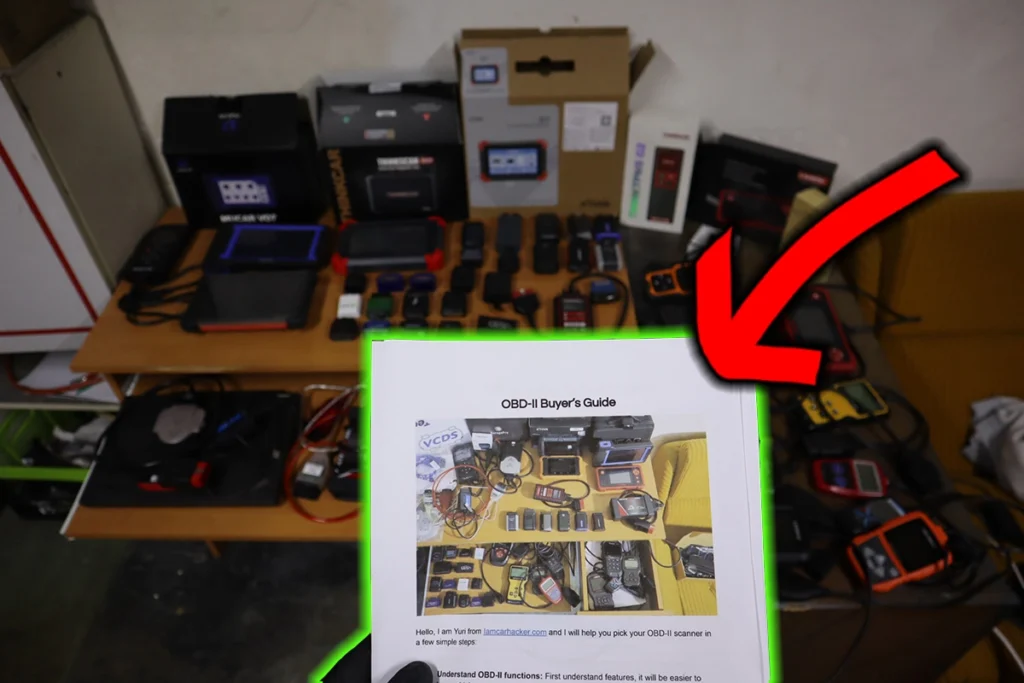P0132 O2 Sensor Circuit High Voltage Bank 1 Sensor 1 indicates an issue with your upstream oxygen sensor on Bank 1. The most common causes are faulty O2 sensors, damaged wiring, of previously replaced O2 sensors with aftermarket or universal parts.
P0132 quick overview
| Meaning | O2 Sensor Circuit High Voltage Bank 1 Sensor 1 |
| Is it serious? | Moderate to Serious. It points to a potential problem with the fuel mixture, which can impact engine performance and emissions. |
| Possible causes | – Faulty O2 sensor – Wiring Issues – Exhaust Leaks – Rich Fuel Mixture – Vacuum leak – MAP/MAF sensor issue |
| How to diagnose? | Check O2 Sensor Operation: Monitor O2 sensor readings using a scan tool. Verify if the sensor is switching properly. Inspect Wiring: Examine the wiring connected to the O2 sensor for damage or wear. Assess Exhaust System: Look for any leaks or issues in the exhaust system that might impact sensor readings. Evaluate Fuel Mixture: Check if the engine is running too rich, as this can affect O2 sensor voltages. |
| What is Bank1 Sensor 1? | Sensor before catalytic converter in the engine head 1 exhaust system. A full explanation of Banks is here. |
Free PDF: How to choose OBD2 scanner

I’ve made you a free PDF to choose the OBD2 scanner in 5 minutes.
✅ Which OBD2 scanner is best?
✅ Which type should you get (DIY, Pro, Hobby)
✅ What is the best scanner for the exact brand/feature (e.g best for BMW)
✅ How to get a Bi-Directional tool for as cheap as $40
✅ Discount coupons for scanners
PDF is 100% free and it is designed to help you pick a scanner in less than a few minutes! Not a boring 50-page guide.
Just tell me where to send it.
What is “voltage high”?
In scan tool codes, “voltage high” typically refers to a situation where the voltage level of a particular sensor or component exceeds the expected or normal range. This can indicate a problem in the electrical circuit associated with that sensor or component. High voltage readings may suggest issues such as:
- Short to Voltage: The sensor’s signal wire might be shorted to a voltage source, causing higher-than-expected readings.
- Faulty Component: The sensor itself may be malfunctioning, producing higher voltage signals.
- Wiring Issues: Damaged or compromised wiring in the sensor circuit can lead to abnormal voltage levels.
- Reference Voltage Problems: Issues with the reference voltage supplied to the sensor can affect its readings.
For example, in the context of the P0132 code (“O2 Sensor Circuit High Voltage”), it indicates that the O2 (Oxygen) sensor in Bank 1, Sensor 1, is reporting a voltage higher than expected. This could be due to various factors, including a faulty sensor, wiring issues, or problems with the exhaust system.
How to fix P0132 – learn from mechanics
I looked into P0132 service cases at iatn.com website where in the private forums the mechanics seek advice from other mechanics. I looked up a bunch of cases to help you decide how to fix your issue and see what would a real mechanic do to solve it.
Case #1: Dodge
Vehicle Information:
1998 Dodge Dakota SLT
Engine: 5.2L
Mileage: 277,035 miles
Issue + Repair History:
- Symptoms: Misfire on acceleration.
- Previous issues included a plugged catalytic converter and codes P0300, P0304, and P0307.
- The catalytic converter and muffler were replaced.
- After the repair, an additional code P0132 (O2 sensor high voltage) appeared.
Suggestions from the Community:
- Check fuel trim.
- Investigate the O2 sensor heater circuit and wiring.
- Verify the sensor brand and quality.
- Inspect power and ground to O2 sensors.
- Check for broken or unplugged sensor wires.
- Examine the fuse on the O2 heater circuit.
Final Fix:
A broken sensor wire was discovered at terminal 6 in the connection at Bank 1 Sensor 1 (B1S1), likely damaged during the catalytic converter replacement. The broken wire was repaired, resolving the issue.
Case #2: Jaguar
Vehicle Information:
1997 Jaguar XJ6
Engine: 4.0L
Issue + Repair History:
- Symptoms: MIL Lamp on with initial code P0420 (Catalyst Efficiency Below Threshold), later followed by P0132 (O2 sensor high voltage).
- Original issue: P0420, with catalytic converter operation tested as normal.
- Both O2 sensors were replaced with OE spec sensors due to slow response in Bank 1 Sensor 1 (B1S1).
- The P0420 issue was resolved, but the P0132 code appeared.
Suggestions from the Community:
- Swapped sensors between Bank 1 and Bank 2, but the same code persisted.
- Checked the connector, wiring, and ground for the sensor, all of which appeared proper.
- Replaced the B1S1 sensor with an OE sensor again, but the result did not change.
Final Fix:
A vacuum leak (false air) was discovered in the crankcase breather hose. The vacuum leak was repaired, and the PCM was reset, resolving the issue.
Case #3: Suzuki
Vehicle Information:
2007 Suzuki Forenza
Engine: 2.0L
Issue + Repair History:
- Symptoms: O2 sensor code P0132 and engine surging when cold.
- A used engine was installed due to a broken timing belt, burnt valves, and piston damage.
- The timing belt, water pump, and thermostat were replaced along with the used engine.
- Afterward, the vehicle experienced surging and the P0132 code when the engine was cold.
Suggestions from the Community:
- Monitored Bank 1 Sensor 1 (B1S1) and observed a voltage reading of 1.5V when the engine was cold.
- During this time, the Short Term Fuel Trim (STFT) ranged from -18 to -25.
- Replaced the B1S1 O2 sensor with an OE sensor, but symptoms persisted.
- Checked voltage (12 volts) and replaced the O2 sensor again, but the code returned.
Final Fix:
It was discovered that the wiring harness used with the replacement engine had reversed signal and ground wires. The wiring harness was replaced with the correct one, resolving the issue. The P0132 code did not reappear after fixing the wiring harness.
Case #4: Nissan
Vehicle Information:
2002 Nissan Xterra SE
Engine: 3.3L
Issue + Repair History:
- The vehicle came in with codes P0328 (Knock Sensor) and P0132 (O2 sensor high voltage).
- The knock sensor was replaced, resolving the P0328 code, but the P0132 code returned.
Suggestions from the Community:
- Graphed the O2 sensors, and both front O2 sensors appeared okay.
- The code only reset while driving.
- No vacuum leaks were detected, and fuel pressure was within the normal range.
- Checked the voltage drop from the intake manifold to the engine block, which was normal at 0.002V.
Final Fix:
The front O2 sensor was replaced, resolving the issue.
Case #5: Hyundai
Vehicle Information:
2009 Hyundai Sonata GLS
Engine: 2.4L
Issue + Repair History:
- Codes: P0106 (MAP Sensor) and P0132 (O2 sensor high voltage).
- The customer reported rough running and chugging with the MIL illuminated.
- The codes did not duplicate at the shop, but the MAP sensor was replaced by the dealer.
Suggestions from the Community:
- MAP sensor voltage was 3.9V KOEO (Key On Engine Off) and 1.3V KOER (Key On Engine Running), which was within the normal range.
- The 5-volt reference was available at the sensor, and the ground wire was good.
- The O2 sensor voltage was switching normally.
- Both the MAP and O2 sensors were replaced with known good parts, but no problems were observed in the data.
- Engine vacuum, short-term, and long-term fuel trims were not reported.
Final Fix:
It was initially discovered that the MAP sensor installed by the dealer was faulty. A new MAP sensor was obtained and installed, resolving the rough running and chugging reported by the customer. The issue was confirmed to be resolved after installing the correct MAP sensor.
Free PDF: How to choose OBD2 scanner

I’ve made you a free PDF to choose the OBD2 scanner in 5 minutes.
✅ Which OBD2 scanner is best?
✅ Which type should you get (DIY, Pro, Hobby)
✅ What is the best scanner for the exact brand/feature (e.g best for BMW)
✅ How to get a Bi-Directional tool for as cheap as $40
✅ Discount coupons for scanners
PDF is 100% free and it is designed to help you pick a scanner in less than a few minutes! Not a boring 50-page guide.
Just tell me where to send it.

Hi, I am Juraj “Yuri” Lukacko. I got frustrated by unhelpful and scammy mechanics, so I decided to learn everything about car diagnostics myself. I test dozens of new car diagnostic tools every month along with learning new strategies to fix and customize cars. About Juraj Lukacko (Yuri)